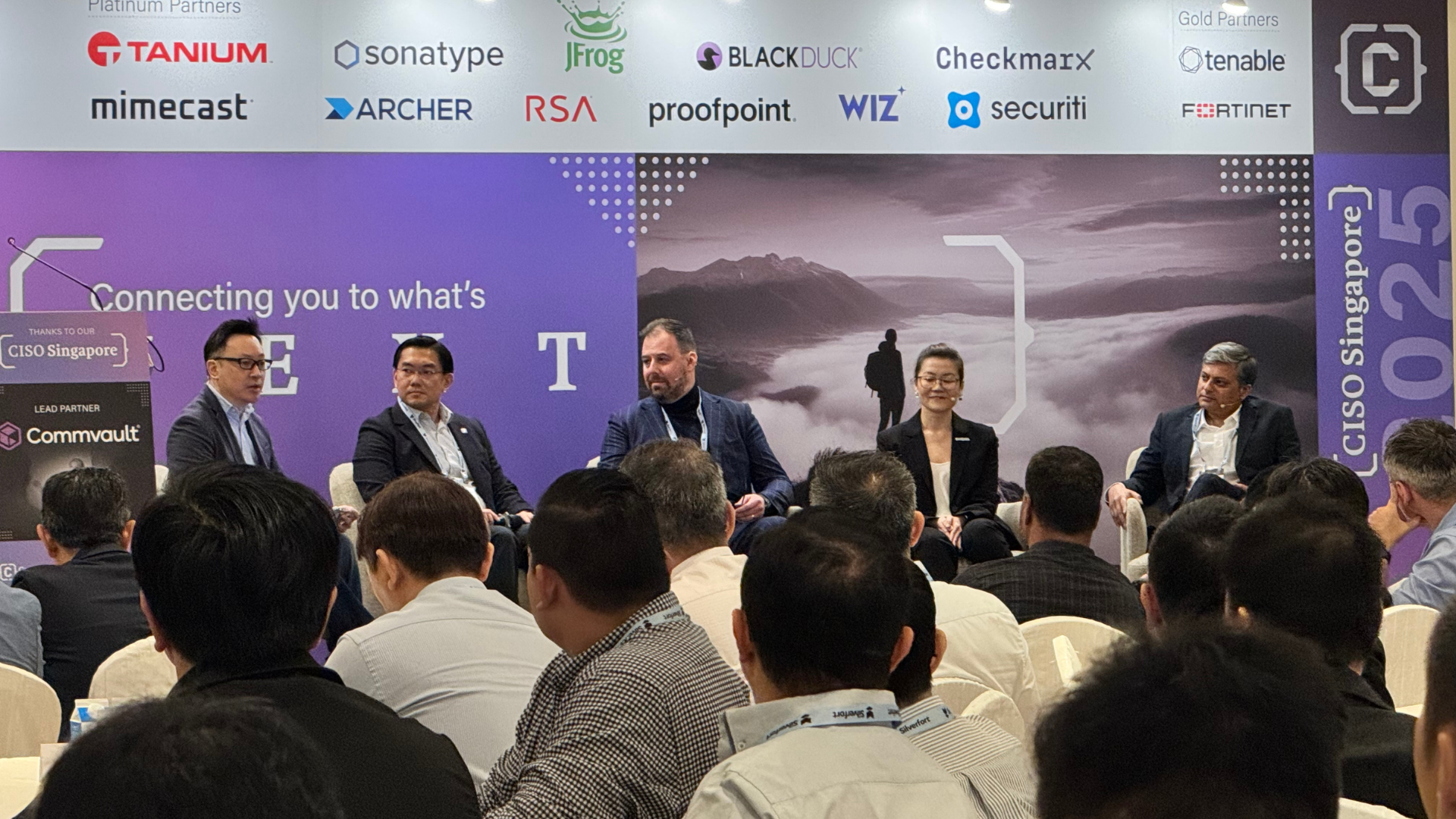7 Key Reflections from CISO Singapore 2025

CISO Singapore 2025 brought together security leaders, business executives, and innovators to explore how cyber security is evolving in an era of constant change. Across keynotes, panels, and hallway conversations, one theme was clear: cyber security is no longer just defence — it’s a business enabler, a trust-builder, and a driver of innovation.
The conversations at CISO Singapore 2025 went far beyond technical checklists. They tackled the big questions CISOs, security leaders, and business executives are grappling with right now: How do we balance defence with enablement? What does trust look like in an AI-driven world? How can security leaders protect their teams while driving business forward?
Whether you joined us in Singapore or are catching up from afar, these reflections matter. They capture not just what was said on stage, but the shifts in mindset shaping the future of cyber security: from guardrails over gates, to identity-driven security, to the ethical responsibilities around AI.
Here are seven standout reflections from the event — and the insights you can apply in your own organisation:
1. From Shift Left to Shift Everywhere
What we heard: Security must be built into every stage of development, not just the beginning. Guardrails, not gates. Invisible security, policy-as-code, and auto-SBOMs are the future.
What it means for leaders: If security still feels like a bottleneck in your organisation, it’s a signal to reframe it. Ask: Where can automation and invisible controls reduce friction for developers while keeping compliance intact?
2. Identity is the New Perimeter
What we heard: In a cloud-native world, the perimeter is gone — identity defines access. Startups and enterprises face very different realities, but neither can rely on yesterday’s tools.
What it means for leaders: Review your identity strategy with the same seriousness you once reserved for firewalls. Invest in continuous authentication, privilege management, and risk-based identity models that scale across hybrid environments.
3. Cybersecurity as a Strategic Business Enabler
What we heard: CISOs must speak the language of the business. Outreach upwards to the board, sideways to peers, and downwards to frontline teams is essential.
What it means for leaders: Map your security goals directly to business outcomes. Instead of saying “we need more budget for monitoring,” frame it as “this investment reduces downtime risk and protects revenue streams.” Security that speaks in ROI terms earns buy-in faster.
4. The Human Side of Cyber Leadership
What we heard: Burnout is real. Mentorship and peer support help CISOs avoid carrying problems alone. Some boards are becoming more cyber-literate — are you prepared with the right answers?
What it means for leaders: Build resilience into your leadership practice. Create informal support networks with peers, and proactively brief your board on emerging risks. Don’t wait for them to ask the hard questions — bring the right ones forward.
5. AI, Ethics, and the Evolving Role of the CISO
What we heard: AI is creating both opportunity and chaos — from fraud and deepfakes to questions about job redesign and ethical responsibility. Some argued the CISO role itself may need to evolve.
What it means for leaders: Treat AI as both an accelerant and a disruptor. Establish an AI security playbook, covering data integrity, ethical guidelines, and model governance. And prepare for how AI may shift your own remit as a CISO — from tech gatekeeper to trust architect.
6. Zero Trust in Practice & The Hidden Risks Ahead
What we heard: Afternoon sessions reminded us that while Zero Trust remains critical, hidden risks often come from the least expected places.
What it means for leaders: If Zero Trust is still a slide deck in your organisation, it’s time to make it real. Start small — with high-value assets, privileged accounts, or a single business unit. And while doing so, keep scanning for “unknown unknowns” in supply chains, third-party ecosystems, and emerging tech.
7. A Converging Risk Landscape
What we heard: The risk environment is defined not by single crises but by their overlap — pandemic, economic strain, geopolitical cyber conflict, supply chain fragility, AI acceleration, climate stress, and disinformation.
What it means for leaders: Stop treating cyber as a silo. Build joint response frameworks that connect cyber, physical, and societal risk. Scenario planning — across domains, not just within IT — is no longer optional.
Looking Ahead
CISO Singapore 2025 made one thing clear: the future of cyber security lies in integration — of business and technology, of ethics and operations, of human resilience and digital trust. The biggest opportunity is to move from reactive defence to proactive enablement.
The question isn’t whether cyber security will shape the business. It’s whether your organisation will be ready when it does.
We have some exciting CISO events happening soon: CISO New Zealand 2025, CISO Malaysia 2026 & CISO Sydney 2026
If you would like to share your experience and insights at our events, feel free to reach out to Vanessa Jalleh.



